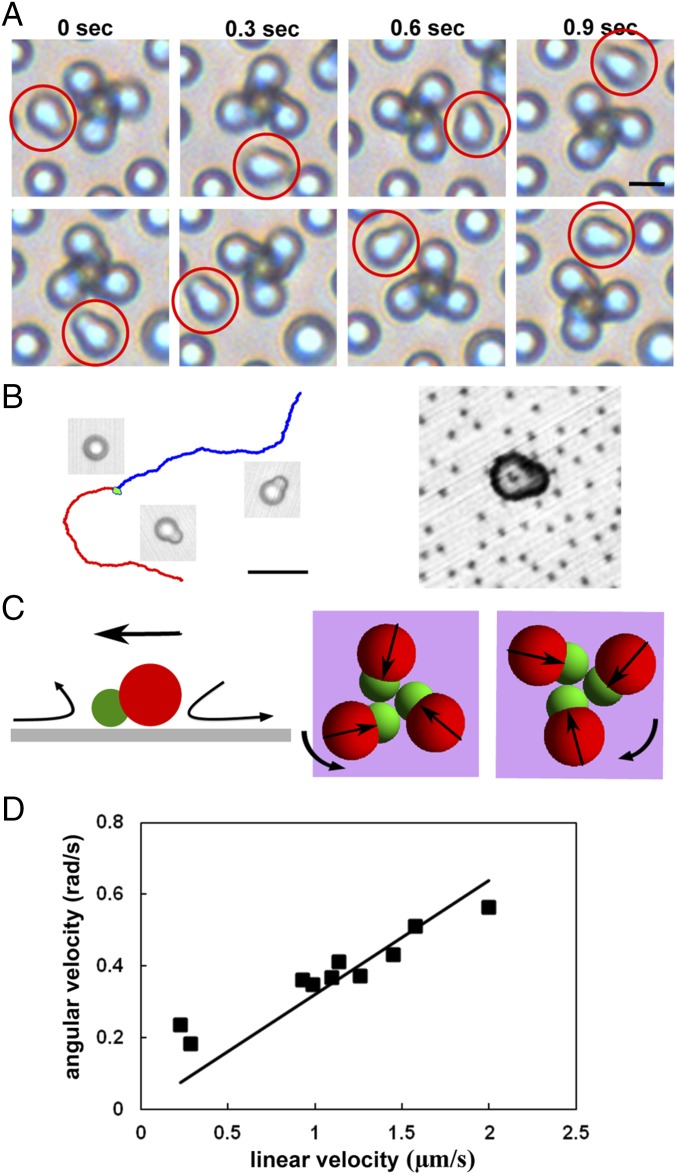Fig. 4.
The rotation of chiral clusters under AC fields. (A) Experimental snapshots show that right- and left-handed tetramers rotate in opposite directions (Vpp = 11 V and 560 Hz). The highlighted dimer, as a passive tracer particle, moves with the tetramer. (Scale bar: 3 µm.) (B) Trajectories of three dimer particles (within 18.6 s) with their respective snapshots showing both particle orientation and propelling direction. Green: a standing dimer. Blue and red: two different lying dimers. (Scale bar: 10 µm.) (C) Schematic showing that the unbalanced electrohydrodynamic (EHD) flow of solvent along the electrode can propel an individual asymmetric dimer and cause a chiral cluster to rotate. For clarity, the central dimer in the cluster is not shown. Straight arrows indicate the EHD flow direction surrounding a dimer. (D) The correlation between the angular velocity of a tetramer and the linear velocity of an individual propelling dimer under the same experimental conditions. Squares, experiment; solid line, theory.

